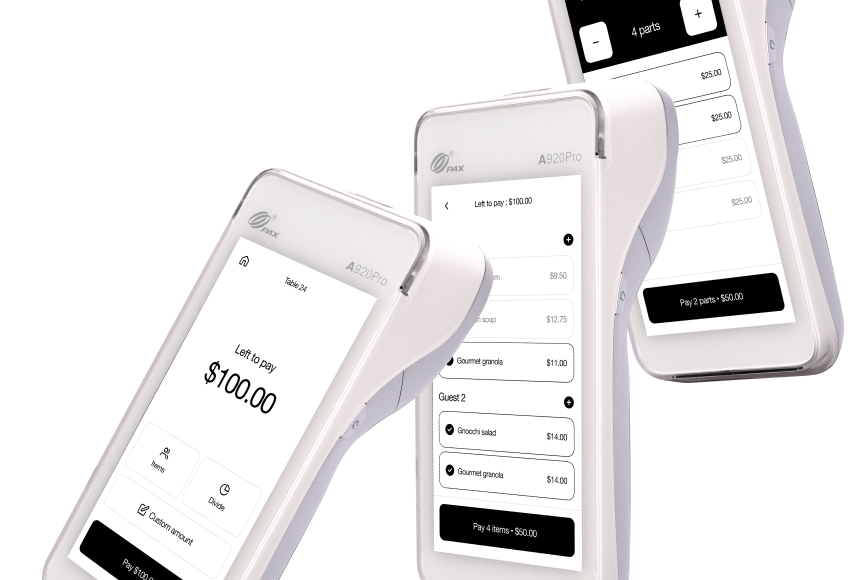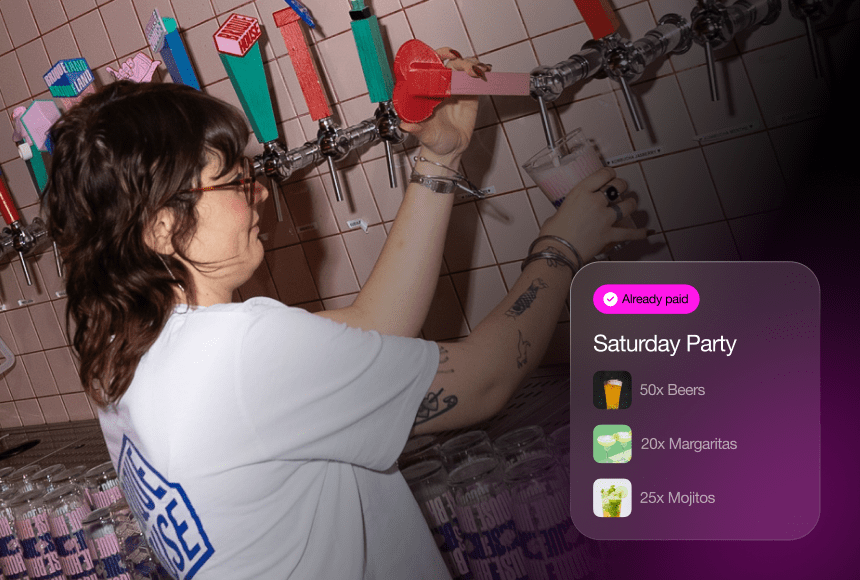
Nurturing a Stable and Motivated Team in the Digital Age
Why High Turnover Is So Common in Restaurants
Running a restaurant can sometimes feel like you’re spinning plates. You’re juggling customer satisfaction, food costs, inventory, and compliance—and often, just when you get a good rhythm going, a valuable team member leaves for another opportunity. In fact, according to the U.S. Bureau of Labor Statistics (Job Openings and Labor Turnover Summary), the hospitality sector consistently records higher turnover rates than most industries, creating a revolving door of new hires and endless onboarding cycles.
Why does this happen so often? Factors like unpredictable schedules, physically demanding work, and irregular tip-based earnings can push good people to look elsewhere. Fortunately, modern technology can ease some of these friction points—specifically, digital HR tools that streamline scheduling, automate tasks, and empower your team. Below, we’ll explore ways you can use digitization to reduce that headache-inducing turnover rate and build a more loyal, motivated crew.
1. Simplify Scheduling and Shift Management
One of the biggest stressors for restaurant workers is juggling unpredictable schedules. If your staff feels they can never plan their personal lives, morale inevitably slips. Enter digital scheduling tools. By automating shift assignments and letting employees request changes or swaps from their smartphones, you can:
- Offer More Transparency: Employees can see upcoming shifts in real time, cutting down on anxiety about last-minute changes.
- Accommodate Preferences: Some systems track availability or skill sets, matching the right people to the busiest times. This can lead to a better match between staff capabilities and shift demands.
- Reduce Burnout: A well-structured schedule ensures no single person is overloaded with consecutive late-night to early-morning shifts, a major culprit for high turnover.
When employees trust that schedules are fair and data-driven, they feel respected and more likely to stay. It’s also a time-saver for managers who would otherwise spend hours each week juggling staff requests.
2. Streamline Payroll and Tip Distribution
From front-of-house servers to back-of-house staff, everyone wants to be paid accurately and on time. Mistakes or delays in payroll can spark frustration and erode your team’s faith in management. Digital HR and payroll systems help by:
- Auto-Calculating Hours: If your scheduling app automatically logs clock-ins, you reduce manual timesheet errors and keep paychecks correct.
- Clear Tip Sharing: Many restaurants pool tips or distribute them among multiple roles. A digital approach records each transaction, so tip splitting is transparent and fair.
- Employee Self-Service: Staff can check pay stubs or tip summaries online, without pestering managers for details. This fosters independence and trust.
When workers know their paycheck is always correct and arrives promptly, it’s one less reason for them to jump ship. Plus, managers can skip the headache of verifying dozens of manual timecards each week, freeing energy for more strategic tasks.
3. Investing in Training and Onboarding through Digital Platforms
A revolving door of employees often creates a domino effect: your seasoned folks leave, and your new hires struggle to get up to speed. That’s why a robust onboarding process—potentially supported by digital training modules—can keep your team strong and stable.
- Interactive Tutorials: Instead of handing new hires a thick binder of rules, let them complete short video or quiz-based modules. They’ll retain information better and can revisit a lesson when confused about, say, the correct wine pairing or how to handle allergies.
- Gamification and Badges: Earning small digital badges for passing product knowledge or safety tests might sound basic, but it can motivate younger staff. It turns training into a friendly, competitive challenge.
- On-the-Fly Refresher Content: Access to microlearning tools means staff can check best practices quickly. Busy line cooks might review a new plating method in a spare minute, boosting consistency in real-time.
Your employees will feel supported from day one, which cultivates a sense of belonging and professional growth—two critical factors in reducing early departures.
4. Smooth Payment Flows for Happier Servers and Less Stress
One unexpected but powerful way to reduce turnover is by removing the drudgery of payment processing. At peak times, servers can be run ragged, juggling multiple credit card swipes or waiting in line at a single terminal. That’s exactly where sunday comes in:
- Faster Table Turns: By letting guests pay via a QR code on their own phones, you eliminate that final bottleneck of collecting checks. Servers free up time to focus on genuine hospitality.
- Higher Tips: An efficient, frictionless checkout often leaves diners in a better mood, nudging them toward a bigger tip. That directly affects server morale and retention.
- Less Manual Error: With diners confirming totals themselves, the chance of a server punching in the wrong amount drops. Avoiding awkward check corrections can reduce stress significantly.
When staff members see how smoothly transactions go, they’re less likely to feel burnt out by the mundane tasks of closing out dozens of tables per shift. More engaged staff means they’ll likely stick around longer.
5. Encouraging Feedback with Real-Time Metrics
Employees crave recognition. They also want to know where they can improve without waiting for an annual review. Digital HR tools can capture performance data and convert it into actionable insights:
- Tracking Sales Figures: If one server sells more desserts or garners bigger tips consistently, a data dashboard can highlight their success. Share it in a team meeting, and let others learn from top performers.
- Identifying Weak Spots: Spot who’s struggling with upselling or forgetting to mention daily specials. Focus training efforts where it matters.
- Guest Feedback Integration: Some solutions let diners rate the service right after paying. Immediate data can help managers give on-the-spot praise or address issues quickly.
A transparent performance dashboard fosters a culture of achievement, letting employees track their growth and feel proud of hitting new milestones.
6. Automating Basic HR Tasks to Focus on Team Culture
From verifying references to collecting digital signatures on policy documents, restaurants often drown in administrative duties. But with digital HR, you can automate these routine tasks:
- Paperless Onboarding: New hires e-sign contracts and fill out tax forms on a secure platform. No physical paperwork means fewer errors and no lost forms.
- One-Click Compliance: Remind staff to watch mandatory safety videos or sign updated guidelines. The system tracks who’s done what, so you don’t chase people individually.
By freeing managers from these housekeeping chores, you can invest time into building a strong team culture—hosting briefings to share success stories or facilitating skill-building workshops. Employees who see real leadership presence (rather than a manager drowning in admin) are more likely to stay loyal.
7. Facilitating Clear Communication Between All Departments
High turnover can sometimes be blamed on communication breakdowns. Maybe the back-of-house never hears the front-of-house complaints, or bartenders miss special instructions from the server. A digital communication platform bridges these gaps:
- Central Hub for Announcements: Let staff see real-time changes to the menu, or urgent updates like “We’re short on salmon tonight—push the veggie special.” Quick updates cut confusion.
- Topic-Specific Channels: Have separate threads for “Shift Swaps,” “New Menu Items,” or “Maintenance Issues.” Staff know exactly where to voice concerns or learn about changes, instead of dealing with a chaotic group text.
When employees don’t feel blindsided by changes, they’re less stressed—and less stress correlates with lower turnover. A simple fix, but powerful in unifying your entire crew.
8. Rewarding Milestones and Growth
One timeless reason people leave is feeling unappreciated. While you might not be able to hand out raises constantly, you can harness digital tools to track and reward progress. For example:
- Digital Recognition Badges: An app that awards a “Star Server” badge for top weekly sales or a “Hustle Hero” badge for covering a coworker’s shift can inject friendly competition and pride.
- Point-Based Incentives: Staff could earn points for consistent punctuality or receiving positive guest feedback. These points might be redeemed for gift cards, extra days off, or a staff meal upgrade.
Knowing the restaurant invests in personal growth fosters a sense of belonging. Employees start viewing your place as a rewarding environment rather than just a stepping stone to somewhere else.
9. Balancing Flexibility with Accountability
In the restaurant world, unpredictability is a given—no-shows happen, and busy nights can appear from nowhere. By using digital tools, you can create a flexible system for staff to pick up or release shifts while still holding them accountable:
- Shift Swapping with Manager Approval: Let employees handle their own trades in an app, but ensure a manager can finalize so there’s no coverage gap.
- Minimum Hours Guarantee: Show staff that you’ll strive to offer a stable base of hours each week. This fosters trust, especially for those dependent on consistent pay.
When staff can adapt their schedules but still operate within guidelines, they’re less tempted to find other jobs that give them more control. That’s good for them—and for your bottom line.
Looking Ahead: Making Tech Work for Your People
Reducing turnover in the restaurant industry is no small feat, but you can do it with the right blend of leadership and tech. Each digital tool—from scheduling apps to comprehensive payment solutions like sunday—eases a piece of the puzzle. The ultimate goal is to give your staff an environment where mundane tasks are automated, scheduling is fair, wages are transparent, and they feel a genuine path to growth.
It’s worth emphasizing that technology alone won’t magically fix retention issues. You still need to reinforce a positive culture, treat employees with respect, and recognize their individual contributions. But digitizing HR tasks, automating schedules, and simplifying payment flows can significantly reduce daily hassles that often push people out the door.
So, if you want to keep a dedicated, high-performing team, consider shifting your HR processes to digital. By harnessing data-driven insights, offering easy scheduling, and ensuring a frictionless end-of-meal experience with solutions like sunday, you’ll build the kind of workplace employees cherish—and rarely want to leave.
In an industry defined by constant hustle, giving your staff the tools to thrive can spell the difference between perpetual turnover and a stable, productive crew that loves making your guests happy.
Find out more today
Drop us your details below and we’ll reach out within the next 24h
Get the full, detailed picture.
sunday elevates your business with insightful data, instant feedback and precise analytics.



